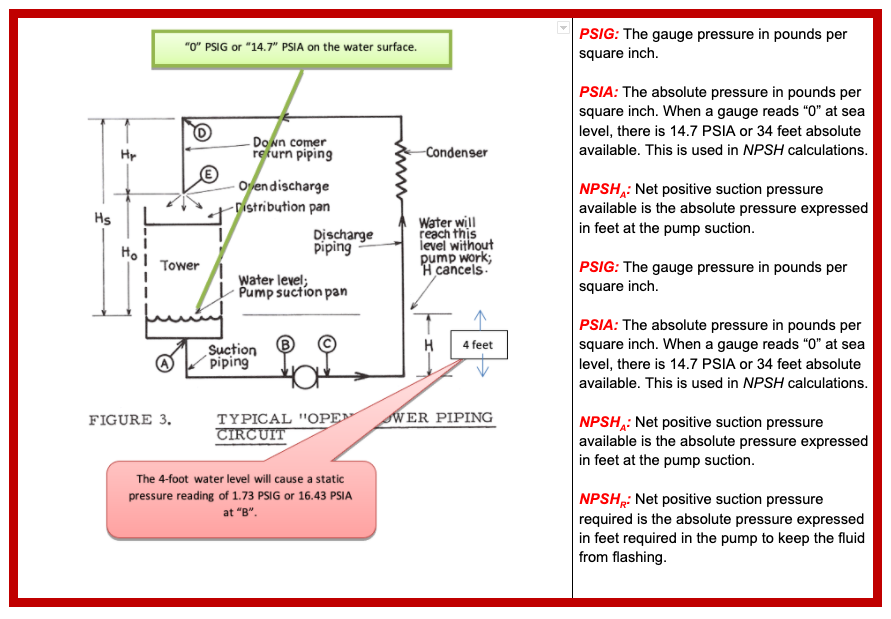 One of the most misunderstood concepts in pump selection for hydronic design is the net positive suction head or NPSH. Problems with NPSH can spell disaster for pumps and building comfort. This blog kicks off the first of a five-part series with terms and proper focus on this pressure unit. This may be one of the most challenging pump topics in the hydronic and steam design world. What better way to end a rather challenging 2020!
One of the most misunderstood concepts in pump selection for hydronic design is the net positive suction head or NPSH. Problems with NPSH can spell disaster for pumps and building comfort. This blog kicks off the first of a five-part series with terms and proper focus on this pressure unit. This may be one of the most challenging pump topics in the hydronic and steam design world. What better way to end a rather challenging 2020!
What is the NPSH of a Pump?
Net positive suction head (NPSH) is simply the absolute pressure, expressed in feet, required at the pump to keep the fluid from vaporizing or boiling inside the pump. We call this cavitation. The photos below show an impeller mistreated by cavitation. Read our R.L. Deppmann Service Tip of the Month – Pump Cavitation to learn more.
We all know that water boilers at 212⁰F at sea level which is 0 PSI gauge pressure or 14.7 PSI (34 feet) absolute. In Mansfield, Ohio at an elevation of 1184 feet, water boils at 210⁰F. In Boyne City, Michigan at an elevation of 600 feet, water boilers at 211⁰F. If a pipe is full of water and the gauge reads 10” of vacuum, water will boil at 192⁰F.
The point is that the pressure will affect the boiling point of water. NPSH is the amount of pressure required to avoid the problems shown above.
It is All About the Terms
NPSH is important in all pump applications. The engineer really needs to pay attention in open cooling tower systems and open or vented condensate pump systems. I will start the terms and use a cooling tower system as an example.

Defining the Pump NPSH Required
As mentioned above, Net positive suction head is the amount of ABSOLUTE pressure required inside the pump suction to make sure the water remains water and does not flash into vapor. Most tower systems are designed to operate at 85°F. Water will not boil at 85°F unless we put it under a substantial gauge vacuum.
NPSHR is expressed in feet of ABSOLUTE pressure, not gauge pressure.
Look at the curve above. Here is an example of a pump selection designed for 1200 GPM at 40 feet of head.
The NPSHR curve is the blue curve at the bottom. If you read up from 1200 GPM to that curve and across to the left, the NPSHR is about 8 feet of absolute pressure. Next week, in part 2 we look at what this means in gauge pressure and piping.
Check out the rest of the Net Positive Suction Head (NPSH) Series:
Part Two – NPSH Safety factors
Part Three – Calculating NPSH Available
Part Four – Gauge Readings
Part Five – Good Cooling Tower Pump Piping Practice



